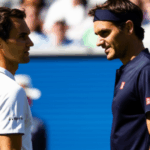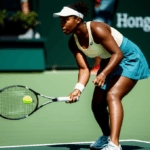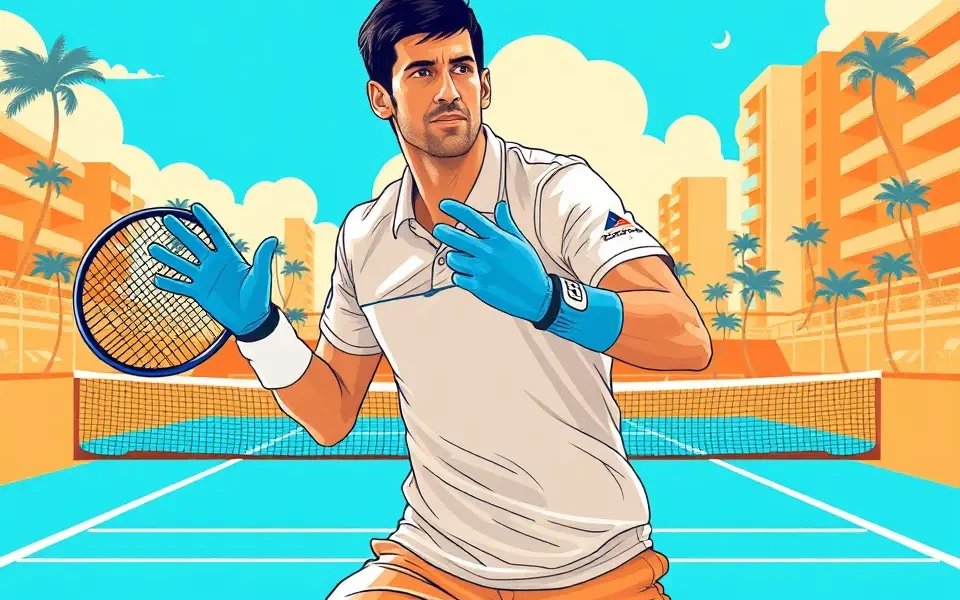Novak Djokovic’s innovative use of cooling gloves during the Miami Open has sparked considerable interest. This wasn’t merely a fashion statement, but rather a strategic method to combat the intense heat and humidity of Miami. This article delves into the science and strategy behind Djokovic’s cooling technique, exploring how these gloves work, why he used them, and the broader implications for athletic performance in extreme conditions.
The Science Behind Cooling Gloves
Cooling gloves are designed to lower the body’s core temperature rapidly. The hand is particularly well-suited for this process due to specialized blood vessels called arteriovenous anastomoses (AVAs) located just beneath the skin’s surface.
AVAs and Heat Dissipation
AVAs are unique blood vessels that allow large volumes of blood to bypass the capillaries and flow directly from arteries to veins. When the body is overheated, these AVAs dilate, allowing blood to flow close to the skin’s surface, where heat can be dissipated into the environment. Cooling gloves exploit this natural cooling mechanism.
How Cooling Gloves Work
Cooling gloves typically contain ice packs or a circulating coolant. When worn, they draw heat away from the blood flowing through the AVAs in the hands. This cooled blood then circulates throughout the body, lowering the core temperature more efficiently than simply cooling the skin’s surface.
Why Djokovic Used Cooling Gloves in Miami
Miami’s high heat and humidity pose significant challenges for athletes, particularly in endurance sports like tennis. Djokovic’s use of cooling gloves was a proactive measure to mitigate the effects of these environmental stressors.
Combating Heat Stress
Heat stress can lead to a variety of negative consequences for athletic performance, including:
- Reduced Endurance: High core body temperature can cause fatigue and reduce the amount of time an athlete can perform at a high level.
- Impaired Cognitive Function: Heat can affect mental acuity, decision-making, and focus.
- Increased Risk of Heat-Related Illnesses: In severe cases, heat stress can lead to heatstroke, a potentially life-threatening condition.
Strategic Implementation During Matches
Djokovic strategically used the cooling gloves during changeovers and breaks in play. This allowed him to:
- Quickly Lower Core Temperature: Rapid cooling helps to counteract the heat buildup that occurs during intense physical exertion.
- Maintain Performance Levels: By mitigating heat stress, Djokovic aimed to sustain his energy, focus, and overall performance throughout the match.
- Gain a Competitive Edge: In a sport where marginal gains can make a significant difference, effectively managing heat stress can provide a crucial advantage.
The Broader Implications for Athletic Performance
Djokovic’s adoption of cooling gloves highlights the growing emphasis on sports science and innovative strategies to optimize athletic performance.
Cooling Techniques in Sports
Various cooling techniques are used in sports to combat heat stress, including:
- Ice Vests: Worn before, during, or after exercise to lower core temperature.
- Cold Water Immersion: Involves immersing the body in cold water to rapidly cool down.
- Cooling Towels: Applied to the neck and face to provide localized cooling.
The Future of Cooling Technology
Ongoing research and development are leading to new and improved cooling technologies. Future innovations may include:
- Wearable Cooling Devices: Advanced materials and miniaturized cooling systems could be integrated into clothing to provide continuous cooling.
- Personalized Cooling Strategies: Athletes could use sensors and data analytics to tailor cooling strategies to their individual needs and environmental conditions.
- Improved Cooling Glove Designs: Refinements in glove design and cooling technology could further enhance their effectiveness and user comfort.
Expert Opinions on Djokovic’s Cooling Strategy
Physiological Benefits Confirmed
Experts in sports physiology confirm the advantages of using cooling gloves. They highlight that cooling the hands, rich in AVAs, is an efficient way to lower body temperature quickly, enhancing performance and endurance in hot conditions.
Djokovic’s Adaptability Praised
Tennis analysts commend Djokovic’s proactive approach to dealing with environmental challenges. His adoption of cooling gloves showcases his commitment to leveraging every possible advantage, cementing his status as an innovator in sports.
Conclusion
Novak Djokovic’s utilization of cooling gloves during the Miami Open exemplifies the increasing sophistication of sports science and its impact on athletic performance. By understanding the physiological principles behind cooling techniques and strategically implementing them during competition, athletes can effectively combat heat stress, maintain performance levels, and gain a competitive edge. As technology continues to advance, we can expect to see further innovations in cooling strategies that will help athletes push the boundaries of human performance in even the most challenging environments.








No Comment! Be the first one.